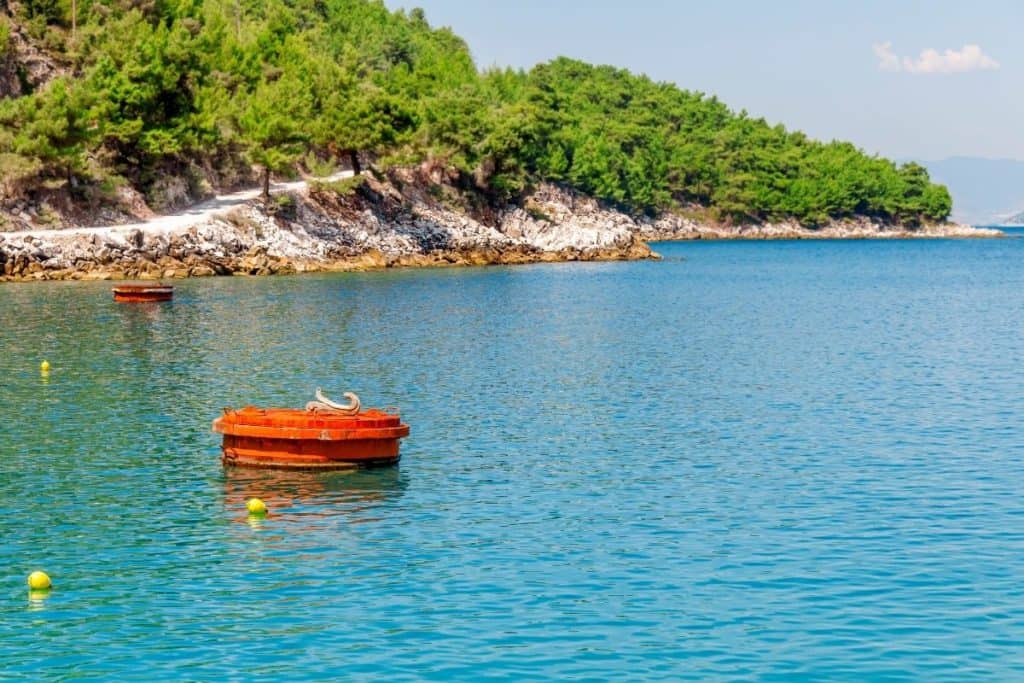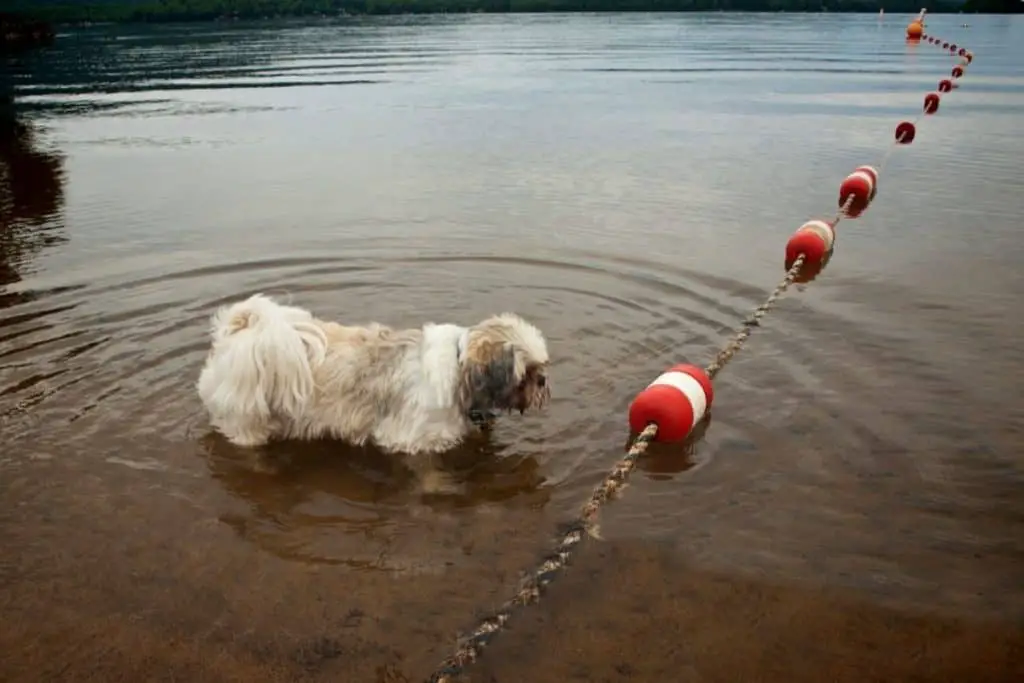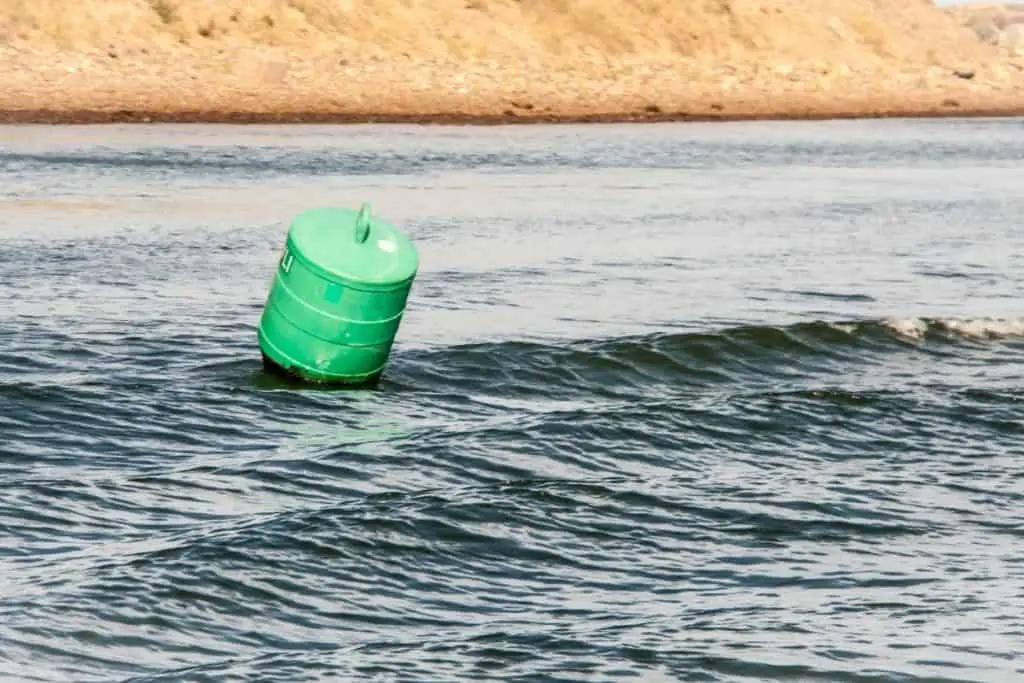As an Amazon Associate we earn from qualifying purchases.
While out on the water, you have probably noticed a lot of oddly marked or colored buoys.
Buoys are float objects often anchored at a precise location to guide or warn mariners of a lot of different things.

They can be used to navigate channels, mark diving areas, signify submerged objects, provide light, help with mooring or are equipped with weather measuring systems.
Basically, buoys are very versatile but it is important that you understand what the markings on the buoys mean. This way, you can keep yourself and others safe while you are out on the water.
They provide very important information that applies to all those who travel out on the water, including sailors, kayakers and canoers.
Table of Contents
Lateral Markers
Lateral buoys are the ones used to help us navigate while out on the water. Think of them as the road signs of water channels – they guide us in the right direction through its color and markings.
They conform with the International Association of Lighthouse Authorities (IALA) guidelines and in the United States, we follow the IALA region B guidelines.
These buoys are often coated with a special kind of paint that is UV resistant and highly visible. It is very durable, hence why it is used when marking and coloring buoys so they don’t fade or become easy to miss.
Lateral markers are painted to be two distinct colors – red and green.
Green buoys identify the port side edge of the channel as you enter the waterway from open sea or heading upstream, so they remain on your left hand side. They will also have a letter and an odd number painted clearly on them. These numbers will increase as you return from the open sea or head upstream.
Red buoys are the opposite – they identify the starboard side of the channel and stay on your right side when heading upstream. They also have an identifiable letter and even number painted clearly on them. These numbers will increase as you return from the open sea or head upstream.
Stay between the buoys in the designated channel to remain in a safe place to kayak.
Sometimes, you may see buoys painted red and green – these are known as junction buoys to show the intersection of two channels. The color of the top stripe indicates the preferred channel for navigation.
So, junction buoys come in two varieties – those painted with a red horizontal line in the middle are known as port junction buoys, and those painted with a green horizontal line in the middle are known as starboard junction buoys.
You must keep the port junction buoy on the port side of your kayak when heading upstream, or keep the starboard junction buoys on the right side of your kayak when heading upstream.

Non Lateral Buoys
These types of buoys are usually painted with warning signs or symbols that convey to everyone passing important information about hazards and obstructions.
They are there to help guide you from restricted and controlled areas while helping you to identify nearby hazards.
Safe water markers are buoys which are painted with red and white stripes. They can come in any shape or size so just look for the very noticeable stripes.
They signify that the surrounding waters are unobstructed and are safe from all angles. You will most likely find these buoys if you are kayaking out onto the sea.
Isolated danger markers are buoys that are black on top and have red and black stripes painted horizontally down the rest of their body.
They indicate potential dangers and hazards are nearby so you need to approach with caution. Although these buoys do not tell you exactly what the danger is, it could be something like a wreck, rock or isolated shoal.
Obstruction markers are buoys that are painted with vertical black and white stripes. They are there to show that there are obstructions in the way between the closest shoreline and the buoys. Whatever you do, do not pass these buoys.

Regulatory Marker Buoys
Now we move onto regulatory marker buoys – these are the orange and white buoys with writing and symbols painted on them to alert vessel operators.
A lot of these buoys are directed at boaters, but it is still important that you understand what they mean. This way, you can still clearly identify safe waters for you to kayak or swim in, and other areas where you may need to be aware that boats could be passing through.
Regulatory buoys with an orange diamond with writing in the middle are there to warn boaters to hazards. You too can take notice of them and be on your guard for any dangers ahead.
Buoys that feature an orange diamond with a cross inside it are exclusion buoys. This means that boats are prohibited from the area – so you should not see any boats ahead.
These are used to indicate areas for kayakers, canoers and swimmers only. This is also a very important one for you to recognize so you know that you are in a safer area.
Buoys with orange circles are to indicate restrictions for boaters such as speed limits or instructions to slow down. Boats can still be in the area but they are under some restriction.
And finally, any buoys with orange squares are there to help boaters with some helpful information. This could be directions to boat ramps, distances from the shore, anything! Although they may not be very useful to you, it is still worth taking note.
Conclusion
And is how buoys are marked!
Each buoy is painted a certain color with bright, noticeable paint that is also very durable. This way, buoys do not have to be repainted often and can withstand sunshine and water very well without flaking or fading.
Also, each buoy has a purpose and is specifically marked to help inform and warn those traveling through water channels. Some are used to navigate, others are used to mark hazards and safe waters.
It is important that you understand each and every one so you can navigate through the water safely on your kayak and be aware of any hazards or restrictions on boats.
Happy kayaking!
Amazon and the Amazon logo are trademarks of Amazon.com, Inc, or its affiliates.

